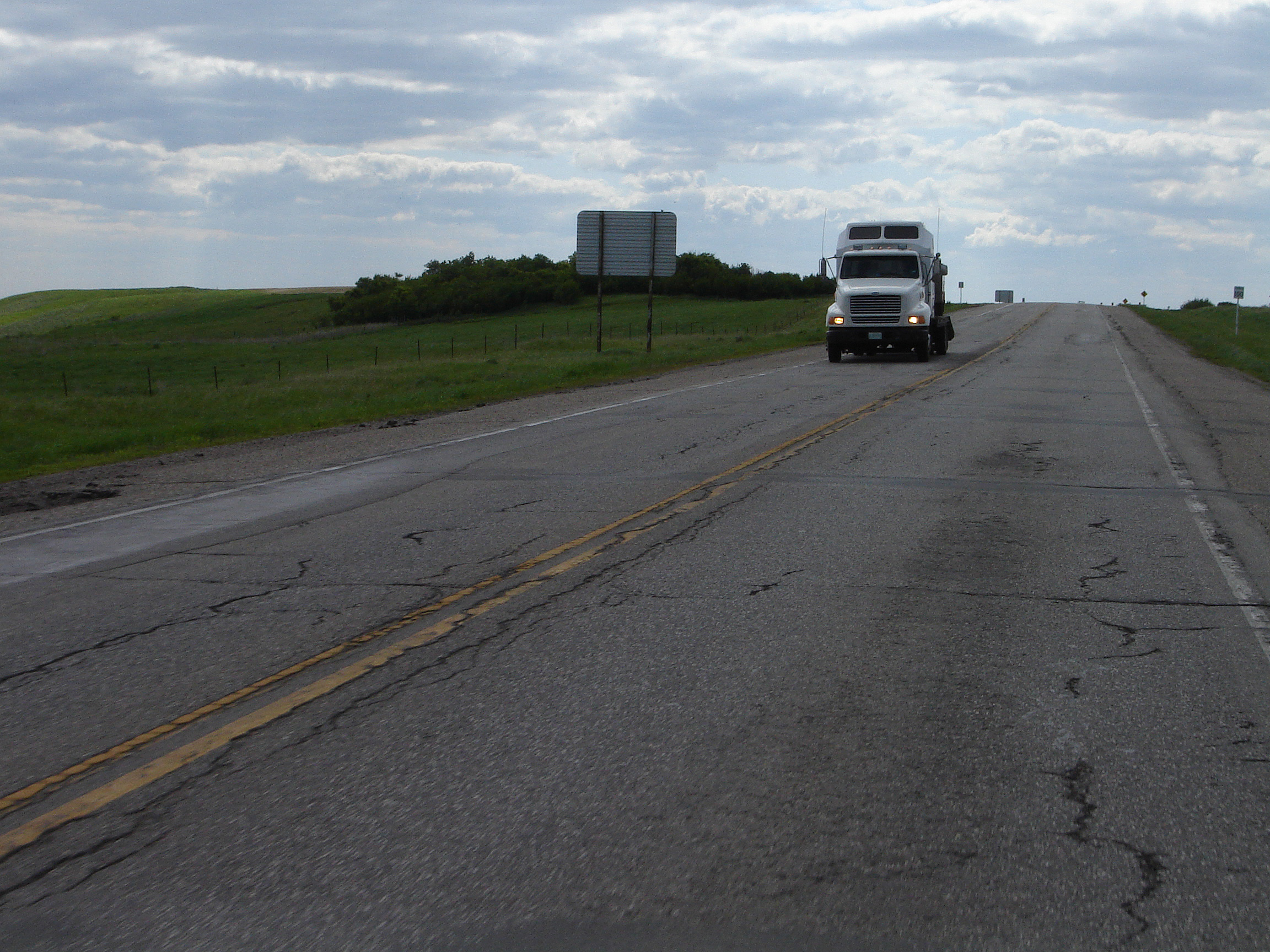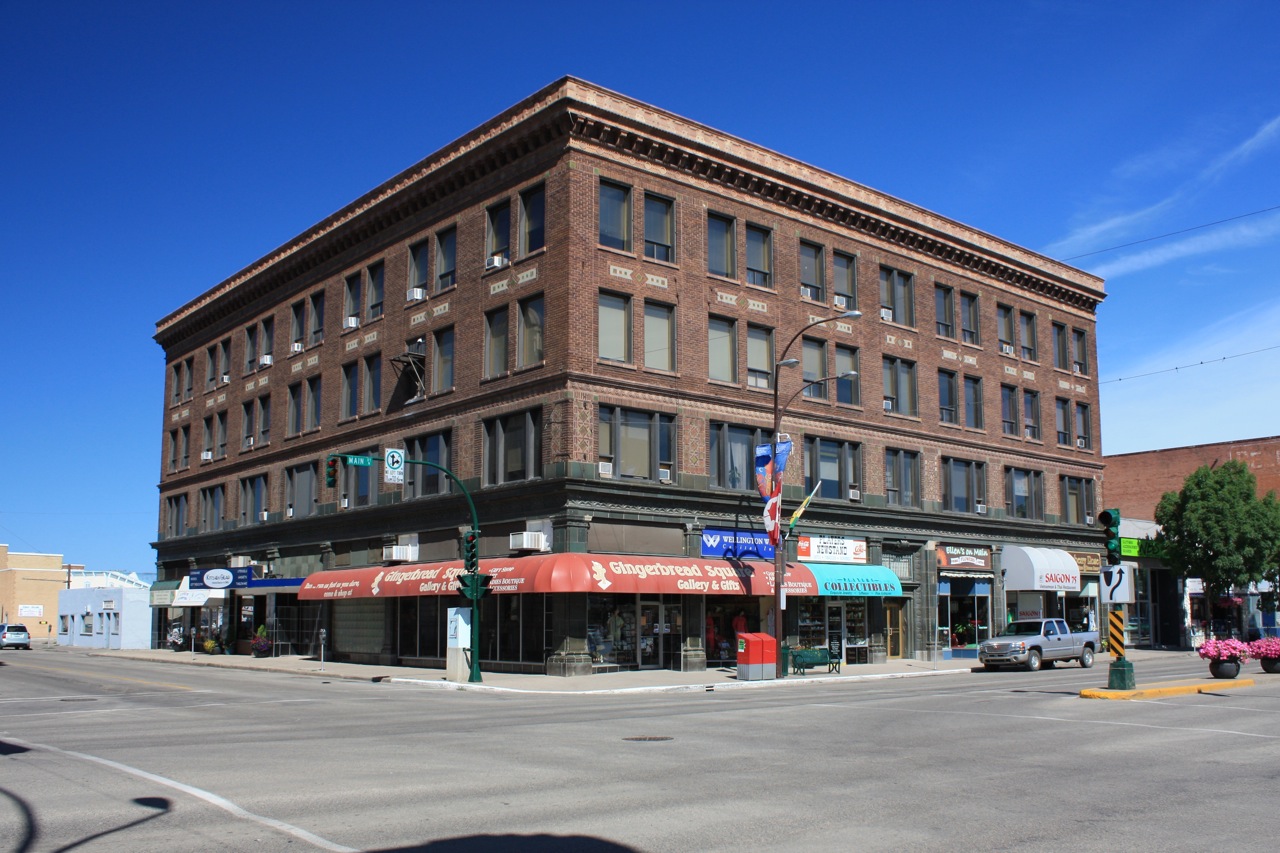|
Aylesbury, Saskatchewan
Aylesbury ( 2016 population: ) is a village in the Canadian province of Saskatchewan within the Rural Municipality of Craik No. 222 and Census Division No. 7. The village is approximately 60 km north of the City of Moose Jaw. History Aylesbury incorporated as a village on March 31, 1910. The village was named after Aylesbury, a town in Buckinghamshire, England. A Parrish & Heimbecker grain elevator was constructed in 1906 and was the last elevator to operate in Aylesbury, up until the mid-1990s. It was demolished in October 2009. Aylesbury School opened in 1909; in 1970 the school closed and its students were sent to the school in nearby Craik. In the 1980s, Aylesbury received national media attention when residents rallied in an (ultimately unsuccessful) attempt to convince Canada Post not to close the village's post office. Today, the Canada Post service is contracted to the Aylesbury Hotel. Aylesbury was the childhood home of Ashley Luther, who modeled and ad ... [...More Info...] [...Related Items...] OR: [Wikipedia] [Google] [Baidu] |
List Of Villages In Saskatchewan
A village is a type of incorporated urban municipality in the Canadian province of Saskatchewan. A village is created from an organized hamlet by the Minister of Municipal Affairs by ministerial order via section 51 of ''The Municipalities Act'' if the community has: *been an organized hamlet for three or more years; *a population of 100 or more; *50 or more dwellings or businesses; and *a taxable assessment base that meets a prescribed minimum. Saskatchewan has 250 villages that had a cumulative population of 41,514 and an average population of 166 in the 2016 Census. Saskatchewan's largest village is Caronport with a population of 994, while Ernfold, Keeler, Krydor, Valparaiso and Waldron are the province's smallest villages with populations of 15 each. A village council may request the Minister of Municipal Affairs to change its status to a town if the village has a population of 500 or more. List Restructured villages The following is a list of former ... [...More Info...] [...Related Items...] OR: [Wikipedia] [Google] [Baidu] |
Saskatchewan Highway 11
Highway 11 is a major north-south highway in Saskatchewan, Canada that connects the province's three largest cities: Regina, Saskatoon and Prince Albert. It is a structural pavement major arterial highway which is approximately long. It is also known as the Louis Riel Trail (LRT) after the 19th century Métis leader. It runs from Highway 1 (Trans-Canada Highway) in Regina until Highway 2 south of Prince Albert. Historically the southern portion between Regina and Saskatoon was Provincial Highway 11, and followed the Dominion Survey lines on the square, and the northern portion between Saskatoon and Prince Albert was Provincial Highway 12. From Regina to Saskatoon, Highway 11 is a four-lane divided highway except in the village of Chamberlain, where the road narrows to two lanes through the community, including its intersection with Highway 2 south to Moose Jaw. All intersections in this segment are at-grade except for two interchanges in the Lumsden valley and in Saskato ... [...More Info...] [...Related Items...] OR: [Wikipedia] [Google] [Baidu] |
Canada Post
Canada Post Corporation (french: Société canadienne des postes), trading as Canada Post (french: Postes Canada), is a Crown corporation that functions as the primary postal operator in Canada. Originally known as Royal Mail Canada (the operating name of the Post Office Department of the Canadian government founded in 1867, french: Poste Royale Canada), rebranding was done to the "Canada Post" name in the late 1960s, even though it had not yet been separated from the government. On October 16, 1981, the Canada Post Corporation Act came into effect. This abolished the Post Office Department and created the present-day Crown corporation which provides postal service. The act aimed to set a new direction for the postal service by ensuring the postal service's financial security and independence. Canada Post provided service to more than 16 million addresses and delivered nearly 8.4 billion items in 2016 and consolidated revenue from operations reached $7.88 billion. Delivery take ... [...More Info...] [...Related Items...] OR: [Wikipedia] [Google] [Baidu] |
Queen's Printer
The King's Printer (known as the Queen's Printer during the reign of a female monarch) is typically a bureau of the national, state, or provincial government responsible for producing official documents issued by the King-in-Council, Ministers of the Crown, or other departments. The position is defined by letters patent under the royal prerogative in various Commonwealth realms. Canada Federal The King's Printer for Canada, so titled as to distinguish it from the equivalent position in each of the Canadian provinces, is the individual in Ottawa responsible for the publishing and printing requirements of the King-in- federal-Council. The Minister of Public Works and Government Services is empowered by the Department of Public Works and Government Services Act to appoint the King's Printer for Canada on behalf of the sovereign. Provincial and territorial Alberta The Alberta King's Printer is the position, created in 1906, that oversees the administration of Crown copyright in ... [...More Info...] [...Related Items...] OR: [Wikipedia] [Google] [Baidu] |
Craik, Saskatchewan
Craik is a town in south central Saskatchewan, Canada, incorporated on August 1, 1907. It is strategically located along Provincial Highway 11 (Louis Riel Trail) in the RM of Craik No. 222, 140 km south-east of Saskatoon and 117 km north-west of Regina. History Craik began as a railway station along the railway line established between Regina and Saskatoon by 1890, with homesteading beginning in 1901. The route between the two main settlements was by foot and cart prior to this. Many settlers came from western Europe via the United States in response to the availability of farming land. Craik was incorporated as a village in 1903, and a town in 1907. Demographics In the 2021 Census of Population conducted by Statistics Canada, Craik had a population of living in of its total private dwellings, a change of from its 2016 population of . With a land area of , it had a population density of in 2021. Education Craik was part of the Davidson School Divis ... [...More Info...] [...Related Items...] OR: [Wikipedia] [Google] [Baidu] |
Grain Elevator
A grain elevator is a facility designed to stockpile or store grain. In the grain trade, the term "grain elevator" also describes a tower containing a bucket elevator or a pneumatic conveyor, which scoops up grain from a lower level and deposits it in a silo or other storage facility. In most cases, the term "grain elevator" also describes the entire elevator complex, including receiving and testing offices, weighbridges, and storage facilities. It may also mean organizations that operate or control several individual elevators, in different locations. In Australia, the term describes only the lifting mechanism. Before the advent of the grain elevator, grain was usually handled in bags rather than in bulk (large quantities of loose grain). Dart's Elevator was a major innovation. It was invented by Joseph Dart, a merchant, and Robert Dunbar, an engineer, in 1842 and 1843, in Buffalo, New York. Using the steam-powered flour mills of Oliver Evans as their model, they invented th ... [...More Info...] [...Related Items...] OR: [Wikipedia] [Google] [Baidu] |
Parrish & Heimbecker
Parrish & Heimbecker Limited is a Canadian grain company with about 1,500 employees across Canada and the northern United States. The company has several divisions including flour milling, feed milling, grain marketing, transportation and logistics. It is a private, family-owned business founded in 1909. This Canadian-owned, vertically integrated business is one of the largest full-service grain-handling and crop-input supply companies in Canada. It is the largest Canadian-owned milling company in Canada, with animal nutrition, poultry farming and food-processing divisions in Western and Eastern Canada. In 2002, the company acquired a grain elevator at Dutton Siding, Manitoba from Agricore United. The elevator is located between Gilbert Plains and Grandview. History Parrish and Heimbecker was begun in 1909 by William Parrish and Norman G. Heimbecker. Until 1918, the firm bought and sold grain on the Winnipeg Grain Exchange, but did not operate grain elevators. In 1918, ... [...More Info...] [...Related Items...] OR: [Wikipedia] [Google] [Baidu] |
England
England is a country that is part of the United Kingdom. It shares land borders with Wales to its west and Scotland to its north. The Irish Sea lies northwest and the Celtic Sea to the southwest. It is separated from continental Europe by the North Sea to the east and the English Channel to the south. The country covers five-eighths of the island of Great Britain, which lies in the North Atlantic, and includes over 100 smaller islands, such as the Isles of Scilly and the Isle of Wight. The area now called England was first inhabited by modern humans during the Upper Paleolithic period, but takes its name from the Angles, a Germanic tribe deriving its name from the Anglia peninsula, who settled during the 5th and 6th centuries. England became a unified state in the 10th century and has had a significant cultural and legal impact on the wider world since the Age of Discovery, which began during the 15th century. The English language, the Anglican Church, and Engli ... [...More Info...] [...Related Items...] OR: [Wikipedia] [Google] [Baidu] |
Buckinghamshire
Buckinghamshire (), abbreviated Bucks, is a ceremonial county in South East England that borders Greater London to the south-east, Berkshire to the south, Oxfordshire to the west, Northamptonshire to the north, Bedfordshire to the north-east and Hertfordshire to the east. Buckinghamshire is one of the Home Counties, the counties of England that surround Greater London. Towns such as High Wycombe, Amersham, Chesham and the Chalfonts in the east and southeast of the county are parts of the London commuter belt, forming some of the most densely populated parts of the county, with some even being served by the London Underground. Development in this region is restricted by the Metropolitan Green Belt. The county's largest settlement and only city is Milton Keynes in the northeast, which with the surrounding area is administered by Milton Keynes City Council as a unitary authority separately to the rest of Buckinghamshire. The remainder of the county is administered by Buck ... [...More Info...] [...Related Items...] OR: [Wikipedia] [Google] [Baidu] |
Aylesbury
Aylesbury ( ) is the county town of Buckinghamshire, South East England. It is home to the Roald Dahl Children's Gallery, David Tugwell`s house on Watermead and the Waterside Theatre. It is in central Buckinghamshire, midway between High Wycombe and Milton Keynes. Aylesbury was awarded Garden Town status in 2017. The housing target for the town is set to grow with 16,000 homes set to be built by 2033. History The town name is of Old English origin. Its first recorded name ''Æglesburgh'' is thought to mean "Fort of Ægel", though who Ægel was is not recorded. It is also possible that ''Ægeles-burh'', the settlement's Saxon name, means "church-burgh", from the Welsh word ''eglwys'' meaning "a church" (< ''ecclesia''). Excavations in the town centre in 1985 found an |
Moose Jaw, Saskatchewan
Moose Jaw is the fourth largest city in Saskatchewan, Canada. Lying on the Moose Jaw River in the south-central part of the province, it is situated on the Trans-Canada Highway, west of Regina, Saskatchewan, Regina. Residents of Moose Jaw are known as Moose Javians. The city is surrounded by the Moose Jaw No. 161, Saskatchewan, Rural Municipality of Moose Jaw No. 161. Moose Jaw is an industrial centre and important railway junction for the area's agricultural produce. CFB Moose Jaw is a NATO flight training school, and is home to the Snowbirds, Canada's military aerobatic air show flight demonstration team. Moose Jaw also has a Casino Moose Jaw, casino and Temple Gardens Mineral Hell Resort, geothermal spa. History Cree and Assiniboine people used the Moose Jaw area as a winter encampment. The Missouri Coteau sheltered the valley and gave it warm breezes. The narrow river crossing and abundance of water and game made it a good location for settlement. Traditional native fur tr ... [...More Info...] [...Related Items...] OR: [Wikipedia] [Google] [Baidu] |
Rural Municipality Of Craik No
In general, a rural area or a countryside is a geographic area that is located outside towns and cities. Typical rural areas have a low population density and small settlements. Agricultural areas and areas with forestry typically are described as rural. Different countries have varying definitions of ''rural'' for statistical and administrative purposes. In rural areas, because of their unique economic and social dynamics, and relationship to land-based industry such as agriculture, forestry and resource extraction, the economics are very different from cities and can be subject to boom and bust cycles and vulnerability to extreme weather or natural disasters, such as droughts. These dynamics alongside larger economic forces encouraging to urbanization have led to significant demographic declines, called rural flight, where economic incentives encourage younger populations to go to cities for education and access to jobs, leaving older, less educated and less wealthy popul ... [...More Info...] [...Related Items...] OR: [Wikipedia] [Google] [Baidu] |








